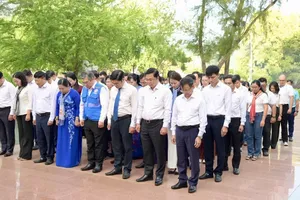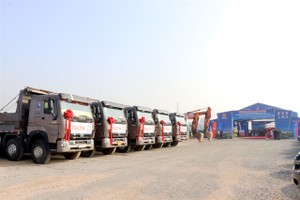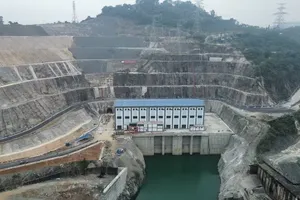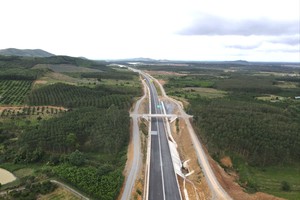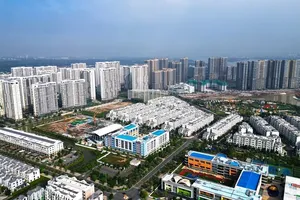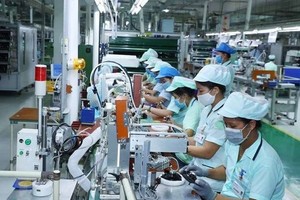The Ministry of Agriculture and Rural Development have encouraged farmers in the Mekong Delta region to switch crops in order to improve productivity, value, and profit. However, the fact that which cultivar should be grown, where to sell them, who will buy them, and how much will they cost, has remained unclear.
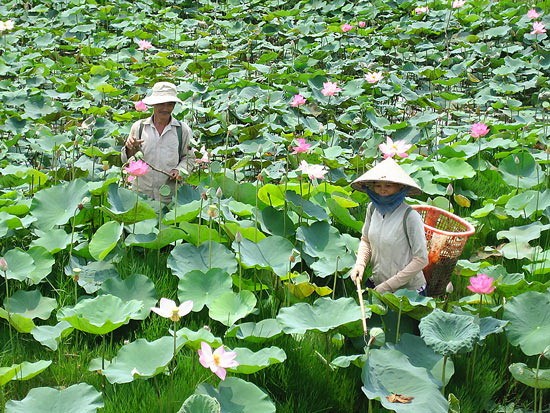
According to experts, reducing the area of rice fields amid a fluctuating rice price and stagnant export of rice is an urgent matter.
Mr. Lam Van Sau, a farmer in Tan Thanh Commune in Dong Thap Province’s Lai Vung District, said that he had an area of 4,000 s.q meters of rice and grew three crops of rice annually. He also worked for other people but his income was still pretty low. Eventually, he decided to replace rice by mandarin orange trees. At first, he grew mandarin orange trees with vegetables to ensure his income. When his mandarin orange trees started bearing fruits, traders came to his orchard and offered a price of up to VND30,000 per kilogram. With 4,000 s.q meters of mandarin orange trees, last year he earned VND400 million, much higher than that from growing rice.
According to the Department of Agriculture and Rural Development of Lai Vung District, mandarin orange has sweet taste and its flesh is not crunchy so it recently has become a favorite fruit in the market, therefore the price of mandarin oranges always swings from VND20,000 to VND30,000 per kilogram, or even rises to VND40,000 per kilogram. With obvious efficiency, farmers in Lai Vung District have switched to grow mandarin orange trees with confidence. Up to now, the area of mandarin orange trees in the district has risen to 1,300 hectares.
Due to low rice price, farmers in Sa Dec City in Dong Thap Province also had to replace rice by other cultivars. Many household have chosen to grow flowers, including Florist’s daisy, marigold, desert rose, and manila grass, bringing them a much higher income than rice.
Mr. Nguyen Ton Hoang, Sa Dec City's leader said that the city has designed a reasonable area and built basic infrastructure for flower cultivation. It has also cooperated with Holland to apply advanced technology in growing flowers and import new and high-quality flower varieties as well as search for steady consumption. In the near future, Sa Sec City will continue to reduce the area of rice and shift to grow flowers to help farmers improve their income, added Mr. Hooang.
Mrs. Huynh Kim Ngoc, a farmer in Thoi Thuan Ward in Can Tho City, said that after growing three crops of rice a year for many years but her income has not improved, she decided to grow sesame this summer-autumn crop. Her 3,000 s.q meters of sesame plants had a bumper crop, bringing in more than VND23 million.
According to the ministry of Agriculture and Rural Development, in 2014, an area of 78,375 hectares of rice paddies had been converted into 23,920 hectares of vegetables, 15,961 hectares of watermelons, 13,117 hectares of sesame plants, and the rest of fruit trees, beans, corn, and herbs. At first, vegetables and fruit trees show higher efficiency than rice as well as provide more jobs for laborers. Crop rotation also helps control pests and diseases for rice and ease the demand for water during dry season. In addition, shifting cultivar also creates more materials for production of foodstuff for cattle, poultry, and aquatic animals, lessens import of feed so as to lower the cost of animal husbandry.
However, when provinces started to switch crops in large scale, they have faced many difficulties.
Mr. Nguyen Cao Mien, director of Tan Binh Vegetables and Fruits Cooperative in Vinh Long Province, said that since the beginning of 2014, his cooperative built the model of growing scallions under VietGAP standards. After that, businesses were invited to visit his cooperative then they signed contracts to buy scallions from his cooperative. At that time, the price of scallions climbed to VND700,000 per quintal, giving farmers a profit of VND100 million per hectares. However, from the beginning of this year to now, when the area of scallions has rocketed, the price of scallions has dropped drastically. The current price was at VND150,000-300,000 per quintal.
Similarly, when the price of dragon fruits was at VND20,000-40,000 per kilogram, several farmers in the Mekong Delta rushed to grow dragon fruit instead of rice. Now, its price has fallen to VND4,000-6,000 per kilogram, sending farmers into miserable situation.
This shows that expansion of cultivation has not matched consumption demand.
The Department of Cultivation said that businesses and farmers have not connected about price, and consumption. In some provinces, crop switching was spontaneous, hence, their prices usually drop when entering harvest season. Because irrigational works mainly serve rice cultivation for a long time, they meet an obstacle when switching to other crops. Therefore, provinces should determine their key farm produce in order to choose appropriate crops in accordance with domestic market and export and develop farm-to-market process to minimize risk for farmers, noted the department.
Agriculture deputy minister Tran Thanh Nam emphasized that crop switching should aim to develop cultivation in large scale, linking with preservation, processing, and consumption. Technology should be applied in order to increase productivity and quality, as well as lower cost and adapt to climate change. Besides, provinces should also focus on investing processing and preservation system to decrease loss and increase value of their products. They also should expand market and promote trade. Measures should be carried out at the same time for crop switching to provide efficiency for a long time.




